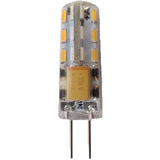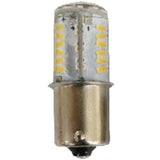Tips to Make Driving Safer with Automotive Lighting
Posted by Nick on for ProLampSales

If you're at all like me, you wait until at least two random drivers tell you one of your brake lights are out, and hope one of those random people isn't a cop with a $350 ticket. However, there is a safer way to ensure your car lights are in working condition.
Let's take a look at some ways to make sure your auto bulbs are in the best working order possible.
Change Lights in Pairs
The reason many auto bulbs are sold in pairs is to keep the light quality consistent on either side of your car. This is because the light output of a bulb diminishes over time. If you only put in one new bulb, you're getting the maximum output on one side of your car, while the other side may be noticeably dimmer.
One dim headlight can be disorienting to yourself and oncoming traffic, while a dim brake light is hazardous. Drivers behind you may get the impression you are using a turn signal instead of braking, reducing their ability to slow down safely. If you're replacing one bulb, make sure to replace the other at the same time.
Upgrade Your Lighting
High performance headlights can offer 60-100% more light than standard bulbs.
If you do a lot of night driving, upgrading to high performance halogens, HID, or LED is a no-brainer. Also, as humans get older, the amount of light reaching the back of their eyes decreases - another good reason to replace headlights with higher quality versions.
Clean Headlights On a Regular Basis
When washing your car or just getting gas, take a look at your headlights. One may be out completely, or just dimmer than the other. And remember to check all of the lights on the front of the car, including daytime running lights, low beam headlights, and the high beams.
Recruit a Friend to Check Brake Lights
To check brake lights, have a friend sit in your car and pump the brakes. Check for how quickly the lights turn on, any dimming on one side, or any burnt out bulbs. If you notice a discrepancy, consider changing the lights.
Also, have your friend turn on and off all of the lights one by one while you check them. Use the daylight running lights, turn on the low beam headlights, then the high beams. In the back of the car, check the brake lights and the white lights that turn on when the car is in reverse.
Use LEDs for Brighter, Faster Lights
Because LED lights brighten quicker than incandescent or halogen, they make a perfect fit for brake lights. In an emergency situation, every millisecond counts. We carry a wide range of LED miniature lights that fit in many makes and models of vehicles.
Also, you can use a specialty car bulb finder to identify the correct bulb numbers for different sections of your vehicle. One of the great things about LED auto bulbs is that one bulb may be able to replace a large range of bulbs in your car, as LEDs can cover a wider range of wattages.
Check and Change Once a Year
Even if your bulbs are not burnt out, a year of driving can take a significant toll on your lights, especially if you drive in an area with extreme heat or cold. While incandescent is largely immune to extreme weather, LEDs perform best in colder climates and may experience shortened life in hot weather.
The switch away from Daylight Savings Time in the fall is a perfect time to evaluate the bulbs since night time comes earlier and the days are getting shorter as winter approaches.
Remember, safer auto lighting means a safer driver in both your car and the cars around you.
Featured Products (View All)
- 0 Comments
- Posted in Automotive
0 Comments




